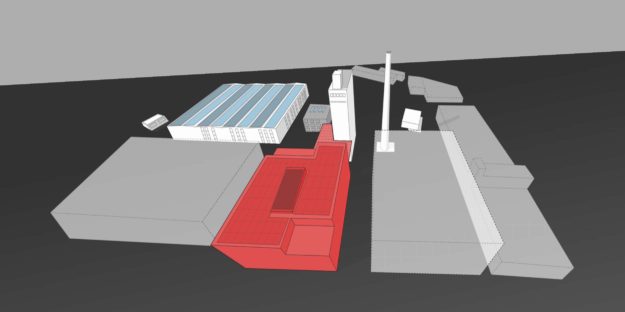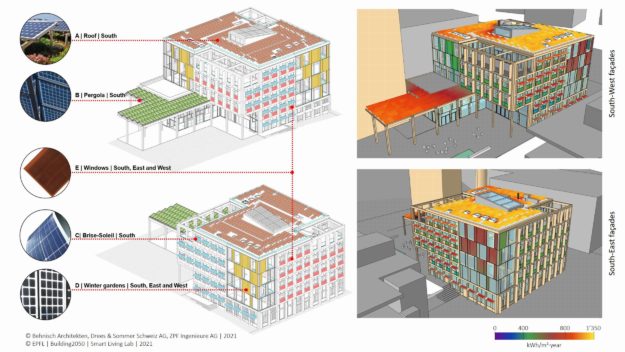Design and monitoring of building-integrated photovoltaics (BIPV) for achieving the environmental targets and the research requirements
Beyond its environmental ambition, the Smart Living Lab is fully committed to the energy transition. One way it seeks to achieve this goal is the decentralization of renewable energy systems (including self-consumption and injection of surplus power into the district or micro-grid network). To achieve an even higher level of self-sufficiency and underscore the pioneering character of the Smart Living Lab building, the Building2050 Group implemented an innovative design method, developed as part of the Active Interfaces research project. This makes it possible to identify the most effective parts of the envelope for energy generation.
The PV system and the identification of the active surfaces (size of the installation) have therefore been optimized based on the electrical consumption estimation in order to achieve the following objectives:
1) maximum electricity withdrawal rate from the network of about 40%, which translates into an self-sufficiency of about 60% with respect to total electricity needs;
2) maintain the carbon content of clean electricity from the BIPV installation lower than the carbon content of the grid;
3) flexible and dynamic management of electrical flows to optimize CO2 emissions from electricity consumption, with the option of choosing the energy source (a) from the electricity network, (b) directly from the photovoltaic panels or (c) from the storage system (li-ion or hydrogen/fuel cell batteries).

